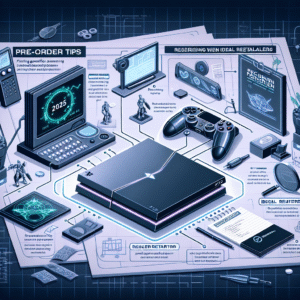The Role of Technology in Education

The Role of Technology in Education
Introduction
With the constant advancements in technology, it has become an integral part of our everyday lives. From communication and entertainment to healthcare and transportation, technology has revolutionized various industries. Education is no exception to this transformative wave, as it has progressively embraced technological innovations to enhance teaching and learning experiences. In this article, we will explore the significant role that technology plays in education and the various benefits it brings to students, teachers, and educational institutions.
Enhancing Engagement and Collaboration
One of the foremost advantages of integrating technology into education is the ability to foster student engagement and collaboration. Traditional classroom settings often limit students’ participation, as some may hesitate to raise their hands or speak out. However, technology tools such as interactive whiteboards, online discussion forums, and collaborative project platforms create a more inclusive environment, encouraging students to actively participate and share their ideas. This leads to a richer learning experience and the development of essential teamwork skills, preparing students for the collaborative nature of the modern workforce.
Catering to Diverse Learning Styles
Every student has their unique learning style, and technology offers a range of tools to accommodate these differences. Visual learners can benefit from interactive multimedia resources that provide visual representations and animations to better comprehend and retain information. Auditory learners can utilize audio recordings or podcasts to reinforce their understanding of complex topics. Meanwhile, kinesthetic learners can engage in virtual simulations or hands-on experiments through educational apps or online tools. By offering a variety of resources, technology allows educators to tailor their teaching to cater to the individual needs of their students.
Access to Vast Resources
Gone are the days when students had to rely solely on textbooks and limited library resources. The internet has unlocked a world of information, making it readily accessible to anyone with a computer and an internet connection. With technology, students can conduct research on any subject, access e-books, academic journals, and online databases. This vast repository of knowledge ensures that students are not limited solely to the materials their school can provide. Teachers can also benefit by staying up to date with the latest research and pedagogical practices, enabling them to provide more accurate and relevant information to their students.
Personalized and Adaptive Learning
Technology has revolutionized the concept of personalized learning, offering tailored educational experiences for individual students. Adaptive learning platforms utilize data and analytics to track students’ progress and identify areas where they may need additional support. This data-driven approach allows educators to intervene promptly and provide personalized feedback, ensuring that every student receives the attention they require. Moreover, educational software can generate personalized learning paths, challenging students at their appropriate skill level and pace, promoting independent learning and improving overall student outcomes.
Preparation for Future Careers
In today’s digital age, technological literacy is imperative for success in almost every career path. By integrating technology into education, students are better equipped for the demands of the modern workforce. Learning to navigate various software, utilizing digital tools to solve problems, and collaborating remotely are all valuable skills in today’s job market. Additionally, exposure to technology in the classroom can spark an interest in STEM (Science, Technology, Engineering, and Mathematics) fields, potentially leading to future career paths in areas such as engineering, programming, or data analysis.
Challenges and Concerns
While technology offers numerous benefits to education, it also presents some challenges and concerns. One common concern is the potential distraction caused by smartphones and other personal devices. Striking a balance between using technology for educational purposes and minimizing distractions requires effective classroom management strategies. Additionally, the digital divide, referring to the disparity in access to technology between different socioeconomic groups, poses a significant challenge. Ensuring equitable access to technology and bridging this gap is essential to avoid exacerbating existing inequalities in education.
The Way Forward
As technology continues to evolve, its role in education will undoubtedly expand. However, it is crucial to remember that technology should never replace the human element in education; rather, it should complement and enhance traditional teaching methods. Providing professional development opportunities for educators, investing in reliable infrastructure, and adopting evidence-based practices are essential for maximizing the benefits of technology in education. By embracing technology responsibly, educational institutions can empower students with the necessary skills and knowledge to thrive in an increasingly digital world.
Conclusion
Technology has become an indispensable part of education, transforming how we teach and learn. From enhancing engagement and collaboration to providing access to vast resources and fostering personalized learning, technology plays a vital role in preparing students for the challenges of the future. While challenges and concerns exist, with careful implementation and support, technology can revolutionize education, empowering students, teachers, and institutions alike. By embracing the opportunities technology offers, we can create a more inclusive, engaging, and effective educational experience for all.




